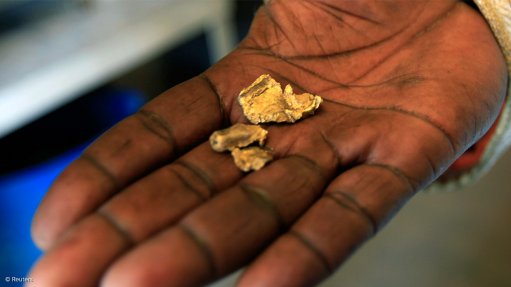
Photo by: Reuters
Effectively dealing with the problem of illegal mining operations really needs the recreation of specialised units by the South African Police Service (SAPS). So highlighted Harmony Gold executive director stakeholder relations and corporate affairs Dr Mashego Mashego, on the first day of the Investing in African Mining Indaba 2024 conference, in Cape Town. He was participating in a media briefing organised by Minerals Council South Africa.
He stressed that illegal mining was not the same thing as artisanal mining, and the two should not be coupled together. Illegal mining was a form of organised crime, with different “tiers” of criminals, from Tier 1 (the low-level illegal miners), up through criminal hierarchies, to the top bosses (which Mashego referred to as “Tier 5”).
He reported that his company had started tackling illegal mining in 2007. From 2007 to 2020, across Harmony Gold properties, 16 590 illegal miners had been arrested. Over the same period, more than 1 200 illegal miners had been found injured, and 641 had been found, dead.
There were three main elements in the company’s response to illegal mining. Firstly, it had had to address the problem of “porous” areas on its properties, which were greater in extent than the operating mine areas. It had to close off unused mines. These gave access to operating mines through interconnecting tunnels. To this end, 50 disused mine shafts have been sealed.
Secondly, the company had to restrict the amount of food its own employees were taking underground: it had discovered that they were selling food to the illegal miners (and at exorbitant prices). As part of this, the company had also to review its own security operations.
And, thirdly, it had to work in and with the local communities around its properties, where the illegal miners and intermediate bosses entrenched themselves, including through the use of intimidation. This initiative had begun to bear fruit, and arrests had taken place, now including arrests of senior crime bosses (at the start of the initiative, it had only been Tier 1 criminals who had been arrested and prosecuted). Three “kingpins”, as Mashego described them, had been arrested, prosecuted, convicted and imprisoned.
But targeting the very top level crime bosses in the illegal mining networks needed the use of higher-level capabilities, at provincial and national levels, and with international cooperation and coordination as well (the stolen gold often being illegally exported). Hence the need for specialised units. “We need to deal with the issue of Tier 3, Tier 4, and Tier 5 of illegal mining [gangs],” he affirmed.